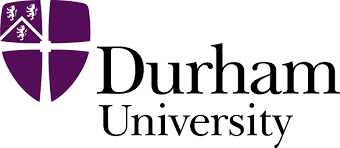
LEED Accredited Professional AP Exam Preparation - Sustainable Design and Construction Techniques (LEED GA is prerequisite for AP Exam)
Course ID: 2507135901096EGI
Course Dates : 13/07/25 Course Duration : 5 Studying Day/s Course Location: Cairo, Egypt
Language: Bilingual
Course Category: Professional and CPD Training Programs
Course Subcategories: Operations and Process Excellence
Course Certified By: * Projacs Academy
* Professional Training and CPD Programs
Certification Will Be Issued From :
KSA
Course Fees: £2,940.22
Vat Not Included in the price. VAT may vary depending on the country where the course or workshop is held.
Click to Pay
Date has passed please contact us Sales@e-s-hub.com
Course Information
Introduction
The global movement toward sustainability has reshaped the architecture, engineering, and construction industries, creating an urgent demand for professionals who can design and implement environmentally responsible projects. Leadership in Energy and Environmental Design (LEED), developed by the U.S. Green Building Council (USGBC), has emerged as a gold standard for sustainable building practices. As cities grapple with climate change, resource scarcity, and urbanization, LEED certification offers a framework to mitigate environmental impacts while enhancing economic and social value. This course is designed to prepare participants for the LEED Accredited Professional (AP) exam, equipping them with advanced knowledge of sustainable design and construction techniques that align with industry best practices.
Despite the growing emphasis on sustainability, many organizations face significant challenges in implementing green building strategies effectively. A lack of technical expertise, inconsistent application of LEED principles, and insufficient understanding of compliance requirements often hinder progress. For instance, a 2021 study by the World Green Building Council revealed that only 30% of surveyed firms had fully integrated sustainable practices into their workflows. This gap underscores the need for specialized training programs that bridge theoretical knowledge and practical application. By addressing these challenges, this course empowers participants to become catalysts for sustainable transformation within their organizations.
Professionals who master the content of this course will not only enhance their career prospects but also contribute to meaningful environmental and societal outcomes. The ability to navigate complex sustainability frameworks positions individuals as leaders in their fields, capable of driving innovation and fostering collaboration across multidisciplinary teams. Organizations benefit from improved project performance, reduced operational costs, and enhanced market competitiveness. For example, a case study of the Edge building in Amsterdam—a LEED Platinum-certified structure—demonstrates how sustainable design can achieve energy savings of up to 70%, showcasing the tangible impact of expertly applied LEED principles.
The course draws on established theories such as the Triple Bottom Line (TBL) framework, which emphasizes balancing environmental, social, and economic priorities. Additionally, it incorporates insights from the circular economy model, which advocates for resource efficiency and waste reduction. These theoretical foundations are complemented by real-world applications, such as the retrofitting of New York City’s Empire State Building to meet LEED standards, which resulted in annual energy savings of $4.4 million. Such examples illustrate the transformative potential of sustainable design when guided by rigorous methodologies.
Participants will delve into the intricacies of sustainable construction, exploring topics like material selection, energy modeling, water conservation, and indoor environmental quality. They will also learn to navigate the LEED certification process, from initial registration to final documentation submission. This comprehensive approach ensures that learners are not only prepared for the AP exam but also equipped to tackle real-world challenges with confidence and competence.
Ultimately, this course represents more than just exam preparation—it is an opportunity to join a global community of sustainability champions committed to creating a better future. Whether designing net-zero buildings, optimizing supply chains, or advocating for policy changes, graduates of this program will possess the tools and knowledge to make a lasting impact. By investing in this training, individuals and organizations alike can position themselves at the forefront of the green building revolution.
Objectives
By attending this course, participants will be able to:
Analyze the core principles of sustainable design and their alignment with LEED rating systems.
Evaluate the environmental, economic, and social benefits of implementing LEED-certified strategies in construction projects.
Design sustainable building solutions that integrate energy efficiency, water conservation, and material optimization.
Implement compliance protocols required for achieving LEED certification across various project types.
Apply advanced modeling tools and software to assess the performance of sustainable design elements.
Synthesize stakeholder feedback and regulatory requirements to develop cohesive sustainability plans.
Critique existing projects using LEED benchmarks to identify areas for improvement and innovation.
Who Should Attend?
This course is ideal for:
Architects, engineers, and construction managers seeking to deepen their expertise in sustainable design.
Sustainability consultants aiming to expand their service offerings and credibility.
Facility managers responsible for maintaining and upgrading green buildings.
Urban planners and policymakers focused on promoting sustainable development practices.
Professionals pursuing LEED AP credentials, provided they have completed the prerequisite LEED Green Associate (GA) exam.
This course is particularly valuable for intermediate learners who already possess foundational knowledge of sustainability concepts and are ready to advance their skills. While prior experience in the construction or design industry is beneficial, the curriculum is structured to accommodate diverse professional backgrounds. Participants will gain actionable insights that directly address the evolving demands of their roles, enabling them to deliver high-impact results.
Training Method
• Pre-assessment
• Live group instruction
• Use of real-world examples, case studies and exercises
• Interactive participation and discussion
• Power point presentation, LCD and flip chart
• Group activities and tests
• Each participant receives a 7” Tablet containing a copy of the presentation, slides and handouts
• Post-assessment
Program Support
This program is supported by:
* Interactive discussions
* Role-play
* Case studies and highlight the techniques available to the participants.
Daily Agenda
The course agenda will be as follows:
• Technical Session 08.30-10.00 am
• Coffee Break 10.00-10.15 am
• Technical Session 10.15-12.15 noon
• Coffee Break 12.15-12.45 pm
• Technical Session 12.45-02.30 pm
• Course Ends 02.30 pm
Course Outlines
Foundations of Sustainable Design
Overview of LEED rating systems and their evolution.
Core principles of sustainable architecture and urban planning.
Integrating the Triple Bottom Line framework into project design.
Case studies of successful LEED-certified projects worldwide.
Day 2:
Energy Efficiency and Modeling
Fundamentals of energy-efficient building design.
Introduction to energy modeling tools and techniques.
Strategies for achieving net-zero energy consumption.
Compliance pathways for LEED energy credits.
Day 3:
Water Conservation and Material Selection
Best practices for reducing water usage in buildings.
Evaluating the lifecycle impacts of construction materials.
Sourcing sustainable and locally available materials.
Achieving LEED credits for water efficiency and material reuse.
Day 4:
Indoor Environmental Quality and Stakeholder Engagement
Enhancing occupant health through improved air quality and lighting.
Designing spaces that promote well-being and productivity.
Engaging stakeholders in the sustainability planning process.
Addressing common challenges in interdisciplinary collaboration.
Day 5:
Certification Process and Exam Preparation
Step-by-step guide to the LEED certification process.
Documenting and submitting evidence for LEED credits.
Review of key topics and practice questions for the AP exam.
Developing a personal action plan for post-course success.



















































